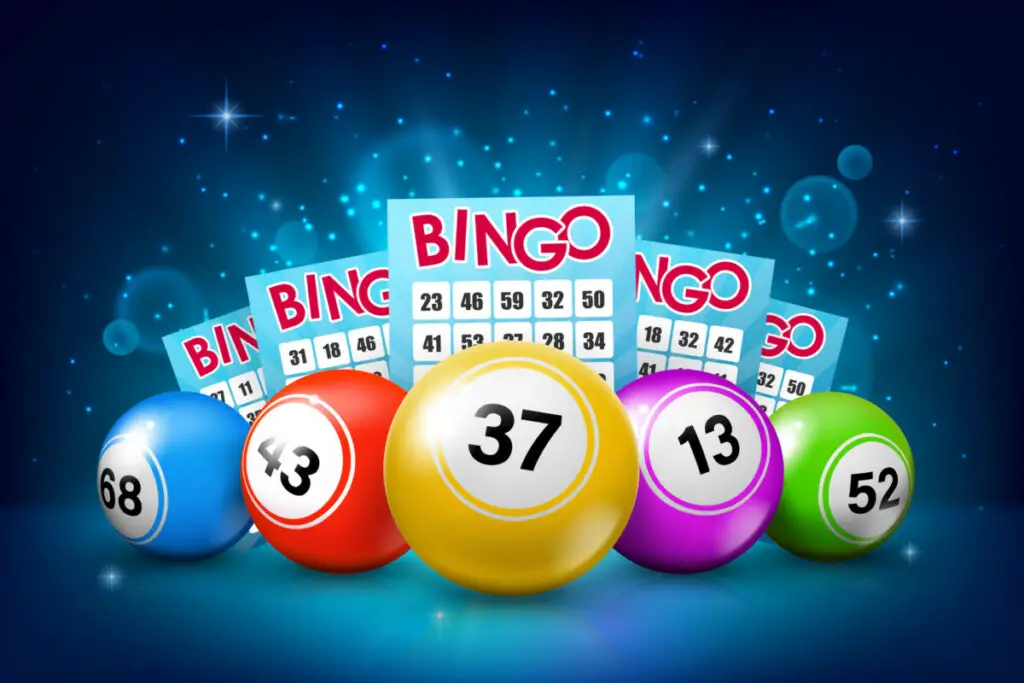Is math often met with groans and eye-rolls in your middle school classroom? You’re not alone. Many educators face the challenge of making math appealing to students. What if we told you that math doesn’t have to be a dreaded subject? In today’s article, we’re diving into the world of fun math games in middle school.
These games are not just entertaining; they’re a clever disguise for learning!
We’re here to show you how to transform ‘boring’ math lessons into an exciting game that students look forward to playing in the classroom. From classic table games to dynamic indoor and outdoor activities, we’ve got many options to make math fun and educational in school.
These games are more than just a pastime; they ignite a passion for learning and dramatically increase students’ hunger for knowledge.
So, discover some of the most engaging and productive math games to enrich your middle school curriculum.
What Are the Benefits of Math Activities?
The benefits of math activities for kids are several and versatile. Math activities can help kids work out their brains, focus, concentrate, and have fun at the same time.
So, let’s see which are those benefits more in detail:
Cognitive Development
In general, math activities help in promoting logical reasoning, critical thinking, and problem-solving skills. Kids learn to analyze and value situations, identify patterns, or connect various concepts for the correct result.
Enhanced Numeracy Skills
Regular exposure to math games or activities helps kids develop a foundation in numeracy, including the four counting methods: addition, subtraction, division, and multiplication.
Also, manipulating numbers in various contexts helps them understand mathematical operations and concepts.
Real World Application
A great benefit, which is among the most important ones, is the real-world application. Math activities usually involve real-life scenarios that we use in our everyday situations.
From counting coins to estimating the time required to do something, kids can participate and learn how to respond to real-world situations.
Of course, these practices will benefit them by helping them understand how adults react in certain situations as they grow up.
10 Fun Math Games for Middle School Classrooms

Now, it is time to discover the ten math games for kids in the classroom. These math games will help kids understand mathematics and play their favorite games in the comfort of their middle school.
These games help understand counting, subtracting, or multiplying. Still, they are also crucial to developing their critical thinking as kids.
So, without losing more time, let’s find out the most exciting math games for kids you can play in the classroom:
1. Bingo Math: Making Learning a Game of Chance and Skill

In this game, youngsters play with bingo cards featuring arithmetic problems or Science, Technology, Engineering, and Math (STEM) terminology, adding a twist to bingo. When someone reads out questions, the kids excitedly mark their cards, combining the strategy required to solve math problems with the excitement of a game of chance. Children are engaged in a dynamic learning environment created by the combination of talent and luck.
How to play: you need to write down a function to let kids think and solve the equation. They need to find the correct number in the card as the answer to the equation.
In addition, to make it more fun, you can add small prizes as a reward for each correct result the kids answer.
2. Math in Nature: Arithmetic with Flowers and Trees
Walking on the wild side turns into instructive adventures when arithmetic is involved. Students can count petals on plants, measure the height of plants, and recognize geometric structures in their surroundings.
This hands-on method fosters an appreciation for nature and the innate beauty of mathematical patterns seen in the natural world, in addition to making the connection between arithmetic and the actual world.
There are no particular guidelines or requirements for this game. You only need to visit nature (e.g., a yard or park near the middle school) and explore different types of trees, flowers, and plants. The point is to let kids think numbers!
3. Robot Building Challenge: Unleashing Creativity with Math
This activity is probably one of the most exciting STEM-focused math games that will surprise students and captivate their attention—introducing the robot-building challenge.
Pupils can embark on a journey of imagination and creativity by building blocks like LEGO blocks or everyday classroom/household items to build their own “robots.”
Allow them to play around while strategically counting the blocks to build anything they like. Combining counting while being creative is a very effective way to encourage kids to learn the fundamentals of arithmetic, counting, and simple mathematics.
You can also advise them to build something else and ask how many blocks they need to use to construct each part to make the game even more exciting.
4. Math Puzzles with Numbers and STEM Twist

Math puzzles are among the most significant ways to introduce STEM concepts and math in the classroom engagingly.
By crafting puzzles that include the solution to STEM-related problems or guessing the correct numbers through mathematical clues, kids get the opportunity to learn numbers while having fun in middle school.
This approach improves their problem-solving skills but can also help them identify the correct piece based on the puzzle’s theme.
In our lives, there are a lot of puzzle themes that combine numbers and counting. To help you understand better, consider a simple example: a puzzle featuring animals where you need to count the number of legs for each animal.
5. UNO! Math – A Fun Way to Learn
Some people may be surprised by this selection of math games, but it would be great to train kids in the classroom while playing a game.
Who doesn’t love this game?
To make UNO! a math and STEM-related game for kids, you can modify the awesome game to smuggle in some fantastic education.
We will demonstrate how to transform UNO! into an enjoyable classroom learning experience by incorporating elements of STEM .
Here’s how to play a mathematical version of UNO!
Red stands for addition, blue for subtraction, green for multiplication, and yellow for division.
Each color indicates a mathematical process. You have to work out a math problem based on the card’s color when you play it.
6. STEM Card Games: A Deck of Learning and Fun

Do you remember those card games you used to love? Recall the card games you used to like. Consider them now after a STEM makeover! Imagine playing your favorite card games with STEM magic added to the mix.
These cards may feature complex equations, fascinating science facts, or even challenging engineering problems instead of typical hearts and spades.
Thus, using these unique cards means that you’re exploring the field of STEM in addition to winning the game. It’s similar to having a hidden code in your deck of cards that allows you to access a wealth of entertaining math, science, technology, and engineering content.
While playing Go Fish or Crazy Eights in middle school, you’re concurrently learning a ton of STEM-related information.
These card games are your key to an educational journey; they’re more than just cards. It’s similar to carrying around a miniature science museum or tech expo in your palm.
Now, deal the cards, shuffle the deck, and start playing STEM games! Learning has never been so much enjoyable in middle school.
These card games are your key to an educational journey. It’s similar to carrying around a miniature science museum or tech expo in your palm.
7. Math in Technology: 3D Printing and Virtual Explorations at Home
Consider tech more than just devices and consider how math could be more interactive in the classroom. Imagine creating 3D objects and traveling through virtual environments.
It resembles doing an interesting math experiment during middle school tech time. Technology gadgets for students and math combine to make screen time equal to that of a tech-savvy mathematician in the classroom!
Learning becomes an adventure, like embarking on thrilling trips where routine tasks become chances to explore the wonders of STEM.
So, give 3D printing a try and test kids’ problem-solving skills in a fun and exciting way in the classroom. You can print anything from geometry models to math puzzles and art projects.
8. Creating a Collaborative Math Story

Every kid actively participates in creating a distinct mathematical tale in the collaborative math story exercise in the classroom. One student starts the process in middle school by asking a mathematical question or offering a mathematical solution.
A young kid may pose an issue such as, “Sam ate three of the ten apples that were there. How many apples are left?” or answer like, “I figured out how to multiply 4 x 6 = 24.”
After the first kid finishes, they pass the storytelling baton to the next kid, who continues the story by adding their math-related element in the classroom.
Each student contributes a piece to the expanding plot of this collaborative story, created through the constant exchange of ideas and mathematical components.
This is just a simple game you can play with the kids in the classroom without any equipment needed.
A simple but interactive classroom game!
9. Number Line Jump – Interact and Learn
Imagine playing another exciting math game, both indoors and outdoors, where you have an extensive pretend line on the floor, like a giant flat ruler. This line has numbers, like the ones you see in your math class. Now, let’s play a game called “Number Line Jump” in the classroom.
So, you stand on one end of this imaginary line. Someone (maybe a teacher or a classmate) says a math question like, “What’s 5 + 3?” Instead of just saying the answer, you get to jump to the right spot on the number line where the answer is hiding.
It’s like a fun hopscotch, but you’re also figuring out math simultaneously. Let’s say you hear “5 + 3” and know the answer is 8. You make a big jump to the number 8 on your imaginary line. Ta-da! You just did a Number Line Jump.
It’s like playing a game where you move around and, at the same time, practice your math by jumping to the correct answer in the classroom.
The best thing about this game is that you can ask kids many math questions. Number line jump is the most interactive game on this list that offers the most excitement to kids in middle school.
10. Math Jeopardy Game
Imagine you’re in a game show called “Math Jeopardy” in the classroom. It’s like those exciting TV game shows, but the spotlight is on math here, and you’re the star player in middle school.
The game has different categories, just like topics in your math class – maybe there’s addition, subtraction, multiplication, and more.
Instead of just answering regular math questions, Math Jeopardy adds a twist. Each category has different levels of difficulty represented by points.
You pick a category and a point value, and then a challenging math question is revealed. Your task? To solve it and earn those points in the classroom.
For instance, if you choose the “Multiplication” category for 100 points, you might get a question like “What’s 7 times 8?” If you know the answer is 56, you earn those 100 points.
It’s not just about solving math; it’s like being a math champion, collecting points, and showing off your skills in middle school.
Wrapping Up

This article has shed light on the numerous benefits of incorporating math games into the middle school classroom, emphasizing their positive impact on children.
In these games, kids enhance their mathematical skills and develop cognitive abilities such as critical thinking, problem-solving, and logical reasoning.
The interactive nature of these activities makes learning enjoyable and fosters a positive attitude towards math in the classroom. By turning learning into a playful adventure, math games become critical companions in a child’s development, paving the way for a future where they approach problem-solving and critical thinking confidently and enthusiastically in the classroom.
By turning learning into a playful adventure, math games become critical companions in a child’s development, paving the way for a future where they approach problem-solving and critical thinking confidently and enthusiastically in the classroom.


